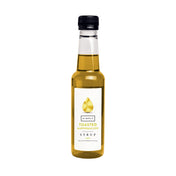Matcha has taken the world by storm. From traditional tea ceremonies to modern coffee shops and social media feeds, this bright green powder has become a global favourite. But what exactly is matcha, why is it so popular, and how do you prepare it properly? In this guide, we’ll cover everything you need to know — from its origins and health benefits to how to make the perfect cup at home.
What Is Matcha?
Matcha is a finely ground powder made from specially grown Japanese green tea leaves. Unlike regular green tea, where the leaves are steeped and removed, matcha lets you consume the whole leaf — giving you a concentrated source of flavour, colour, and nutrients.
The leaves used to make matcha are grown in the shade for several weeks before harvest. This process boosts their chlorophyll levels, giving matcha its signature vibrant green colour and a rich, umami-forward taste. Once harvested, the leaves are steamed, dried, and stone-ground into an ultra-fine powder.

A Brief History of Matcha
Matcha’s story begins in China during the Tang Dynasty (7th–10th centuries), when powdered tea first appeared. The tradition later spread to Japan, where Zen Buddhist monks adopted it as part of meditation rituals. Over time, matcha became a central element of Japanese tea ceremonies, symbolising mindfulness, respect, and harmony.
Today, matcha has moved far beyond temples and tatami rooms — it’s used in lattes, desserts, smoothies, and even skincare. Yet, its roots in calm, deliberate preparation remain unchanged.

Matcha Grades Explained
Not all matcha is the same. There are three main grades, each suited for different uses:
Ceremonial Grade – The highest quality, used in traditional tea ceremonies. It has a smooth, delicate flavour and vibrant colour.
Premium Grade – Great for daily drinking. Balanced taste, ideal for lattes or straight matcha tea.
Culinary Grade – Perfect for cooking and baking, with a stronger taste that stands up to milk, sugar, or heat.
When buying matcha, look for bright green colour, fine texture, and origin in Japan (regions like Uji, Nishio, and Shizuoka are renowned for quality).

What Does Matcha Taste Like?
Matcha has a unique flavour profile that’s often described as vegetal, earthy, and slightly sweet, with a pleasant natural bitterness. High-quality matcha tastes smooth and mellow, while lower-quality powders can taste harsh or astringent.
Because matcha contains amino acids such as L-theanine, it also has a natural creaminess that balances its grassy notes. When combined with milk (as in a matcha latte), it becomes silky and lightly sweet.

Nutritional Value and Health Benefits of Matcha
Matcha’s rise in popularity isn’t just about the aesthetics — it’s known for being a nutrient-dense superfood. Here’s why:
Rich in antioxidants: Matcha contains up to 137 times more catechins (EGCG) than standard green tea. These compounds help protect cells and may reduce inflammation.
Supports heart health: Regular consumption may help lower cholesterol and blood pressure.
Boosts metabolism and fat oxidation: Some studies suggest matcha can enhance calorie burning during exercise.
Improves focus and calmness: The combination of caffeine and L-theanine promotes steady energy and mental clarity without the crash associated with coffee.
Detoxifying properties: Its high chlorophyll content helps the body eliminate toxins naturally.
Of course, matcha isn’t a miracle cure — but adding it to your routine can contribute to a balanced, health-focused lifestyle.
Matcha vs Coffee: What’s the Difference?
Many people turn to matcha as a gentler alternative to coffee. Here’s how they compare:
| Drink | Caffeine (per 240ml) | Energy Effect | Other Benefits |
|---|---|---|---|
| Matcha | ~70mg | Smooth, long-lasting alertness | Antioxidants, amino acids, chlorophyll |
| Coffee | ~95mg | Fast energy boost, short-term | Higher acidity, less stable energy |
Matcha releases caffeine more slowly, offering calm concentration instead of quick highs and lows — perfect for those who want a steady energy boost through the day.

How to Make Matcha Tea
Making matcha properly is simple once you know the technique.
You’ll Need:
1 tsp of matcha powder
60–80ml hot water (around 80°C — not boiling)
A chasen (bamboo whisk) or small metal whisk
A tea bowl or mug
Method:
Sift the matcha powder into your bowl to remove clumps.
Add a splash of hot water.
Whisk briskly in a zigzag or “M” motion until the matcha is fully dissolved and frothy.
Top up with more hot water or steamed milk for a matcha latte.
Enjoy immediately — the delicate foam and vivid colour are best fresh.
Creative Ways to Use Matcha
Matcha’s versatility extends far beyond tea. Try adding it to:
Lattes and iced drinks – Matcha and milk are a perfect pairing.
Smoothies – Add a spoonful for an antioxidant boost.
Baking – Cakes, cookies, and muffins with a subtle green hue.
Breakfasts – Sprinkle into overnight oats or pancakes.
Desserts – Ice cream, cheesecakes, and frostings look stunning in green.
You can even find matcha skincare products, as its antioxidants are thought to soothe and protect the skin.

Common Questions About Matcha
Is matcha vegan?
Yes. Pure matcha powder is 100% plant-based.
Can I drink matcha every day?
Absolutely — most people enjoy 1–2 servings a day.
Does matcha need to be refrigerated?
It’s best stored in an airtight container in a cool, dark place. For long-term freshness, keep it in the fridge.
Is all green tea the same as matcha?
No. Matcha uses the entire leaf, while regular green tea is steeped and discarded — giving matcha a higher concentration of nutrients.
Whether you drink it for focus, flavour, or fun, matcha offers something unique. It’s a bridge between tradition and modern wellness, bringing centuries of culture into every cup.
From pure tea to smoothies and baking, this Japanese green tea powder proves that healthy can be both beautiful and delicious.
If you haven’t tried it yet, start simple — a warm bowl of matcha in the morning, or a refreshing iced latte in the afternoon. Either way, you’ll quickly see why the world can’t get enough of it.



1 comment
From the history to preparation, everything has explained clearly. I would like to request that make one article regarding mushroom coffee.